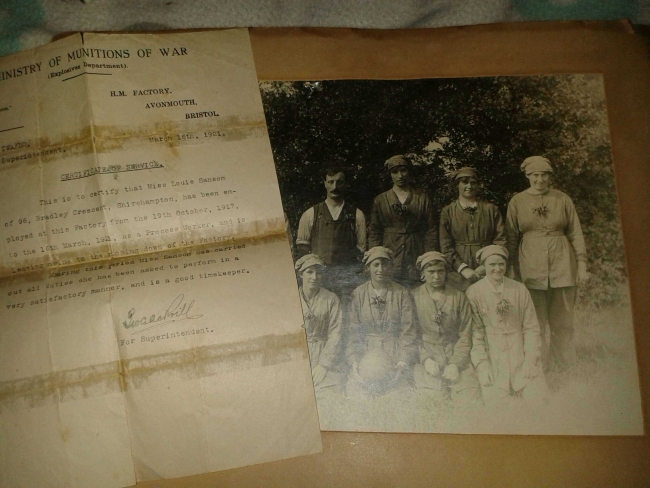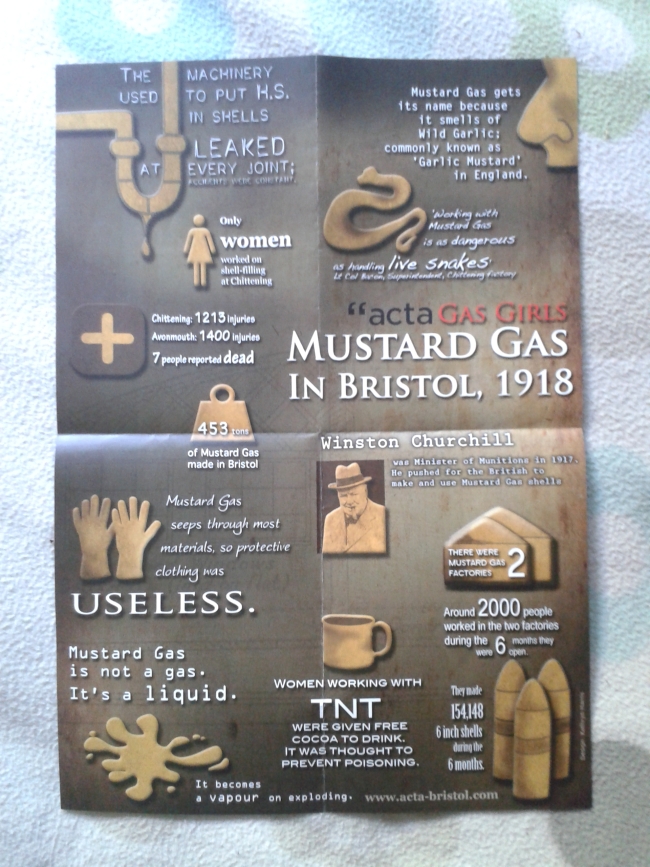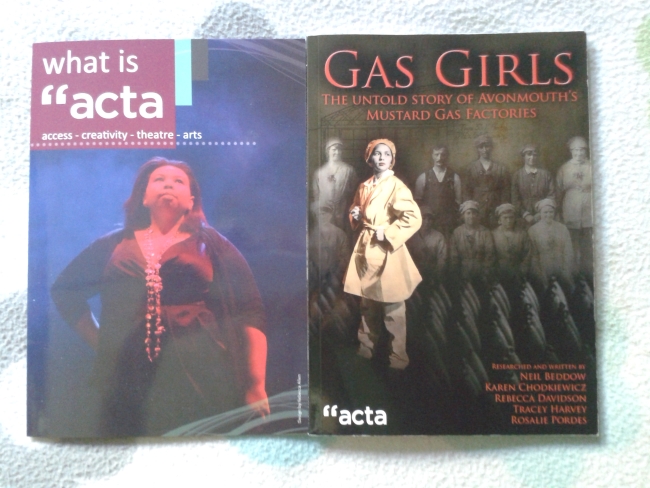12/06/14
Shining a Light on
the WW1 Gas Girls.
09/06/14
Getting crafty and
having simple fun.
03/06/14
Buddy -
A man immortalised by his music.
27/03/14
Teenage kicks stir my emotions
& give me some vivid dreams to boot.
23/03/14
River Monsters Live
at the Bristol Old Vic.
23/03/14
Only a muppet takes a 4 year old
to the cinema!
17/03/14
A winter tree-thief gives
me grief this spring.
08/03/14
Two evenings out in one week!
What a treat, and a disappointment.
09/02/14
What is your attitude to an addict's death?
30/01/14
West Side Story – a classic musical with a modern feel
(and a twist of casual racism!)
26/01/14
A little bit or a lot better or worse George?
25/01/14
This Old Bird Has Started To Tweet
15/10/13
A Barefooted Launch in to Books
07/10/13
London Vegfest 2013
Shining a Light on
the WW1 Gas Girls.
09/06/14
Getting crafty and
having simple fun.
03/06/14
Buddy -
A man immortalised by his music.
27/03/14
Teenage kicks stir my emotions
& give me some vivid dreams to boot.
23/03/14
River Monsters Live
at the Bristol Old Vic.
23/03/14
Only a muppet takes a 4 year old
to the cinema!
17/03/14
A winter tree-thief gives
me grief this spring.
08/03/14
Two evenings out in one week!
What a treat, and a disappointment.
09/02/14
What is your attitude to an addict's death?
30/01/14
West Side Story – a classic musical with a modern feel
(and a twist of casual racism!)
26/01/14
A little bit or a lot better or worse George?
25/01/14
This Old Bird Has Started To Tweet
15/10/13
A Barefooted Launch in to Books
07/10/13
London Vegfest 2013
Shining a Light on the WW1 Gas Girls.
Thursday 12th June 2014.acta Community Theatre are a charity who engage with members of the local community to create original plays and performance projects. Last year they received funding from Arts Council England and the Heritage Lottery Fund to pursue telling the story of the WW1 'Gas Girls' focusing on those working in National Filling Factory No 23 – Chittening, a munitions factory in Avonmouth near Bristol. The group spent 12 months researching the history, trawling through the local and national archives. They then had the daunting task of whittling down the information, selecting which facts to include and finding the best way to raise all the issues they had been made aware of.
A few months ago I saw a photograph on the local news that was familiar to me – a black and white picture of the Chittening women's football team of which my great grandmother was a member. The news piece was about the creation and début of a new play based on the forgotten local history from WW1. Instantly I was intrigued to find out more as I hadn't heard about my Googie's part in this history which other people seemed to find just as fascinating as me. Unfortunately the initial run of the play was sold out but last night, after a long wait of a couple of months, I finally got to see acta's production of Gas Girls at the Avonmouth Community Centre and boy was it worth the wait. Billed as The Untold Story Of The Women Who Made Mustard Gas the play was just that and proved to be entertaining, informative and thought provoking.

My great Grandmother, Louie Sansum, was a Gas Girl and played for the Chittening factory’s ladies football team. They played in a
special charity match against a team of discharged service men on Saturday 5th October 1918 as well as against other female football teams. In this photo she
is on the top row, second from the right.
Many people are unaware that Bristol played a role in the production and supply of mustard gas shells which were used on the front line in World War One. From May 1918 until the war ended in November the Chittening factory manufactured 154,148 six inch shells using the 453 tons of mustard gas produced down the road at the Avonmouth factory. The conditions were atrocious by today's standards. The hazardous chemicals that the workers encountered caused over 2,600 reported injuries and 7 fatalities in the 6 months the factories were operational. Mustard Gas was originally used by the Germans against the British and was incredibly effective, disabling the senses by liquefying any body tissue it came in contact with. It blinded, burnt and choked its victims rendering them ineffective soldiers (and had the same effects on the factory workers). The allied response to this chemical warfare was to investigate this weapon and commence manufacture as soon as possible. It is believed that this played no small role in contributing to the conclusion of the war.

The acta Gas Girls cast
The perils that faced the workers at Chittening and Avonmouth were great but not immediately apparent. By the time the factories opened most workers had lost family members and friends to the conflict and wanted to help in any way they could. There's little doubt that the men and women who entered into the employment of the Ministry of Munitions believed that they would contribute to the war effort in doing so. Very quickly the dangers of mustard gas production and shell manufacture became apparent to both the employers and employees yet the necessity of winning the war ensured that production continued at any cost. Working with such hazardous chemicals with inadequate machinery and very little protection touched the lives of all who spent time there and ensured that all workers' health was in some way effected. In time the psychological and emotional effects would also develop to their fullness but were then swept under the carpet and hidden from sight possibly out of shame and embarrassment, possibly because the horrors of others overshadowed them or possibly just because that was the only way to go on living, to forget the things they could not change.

Gas Girls takes the audience back to the factory floor and the medical hut of the Chittening factory and followed production there, through to the war's end. The range of characters gave credibility to the action on stage and the performers did credit to the people they were representing. The words of those in charge and those below them rang true with realistic emotional journeys. The final scene as war ended brought tears to my eyes and it took me a moment to compose myself before I could ask the people I was with what they thought. My husband simply said, “I didn't realize,” which I think was the overwhelming sentiment from all of us. None of us knew of the sacrifices made by those involved in the manufacture of munitions and the effects that the war had on home ground. There were some very deep philosophical questions raised by the play which were left hanging for the audience to consider and because of this I think Gas Girls will touch audiences of all ages. The issues raised were similar but subtly different to those addressed by the war poets I studied in school. I think it would be great if acta could take this play to schools in the future to help stimulate discussions about weapons of war and the effects they have on people all sides of the conflict; those who make them, those who use them and those they are used against.

The Gas Girls tour continues around Bristol and tickets can be purchased via the acta website:
www.acta-bristol.com
